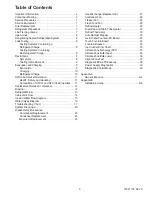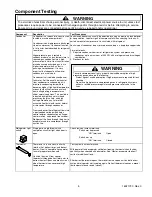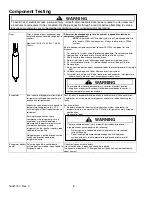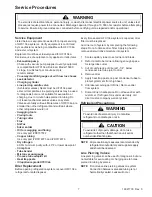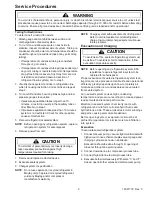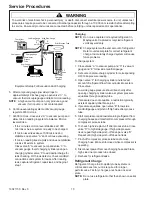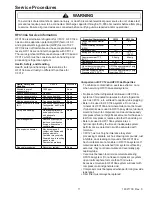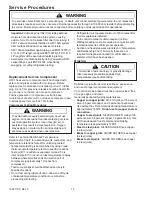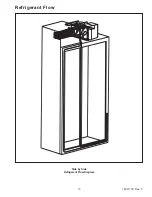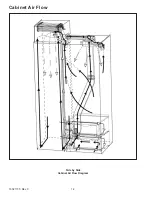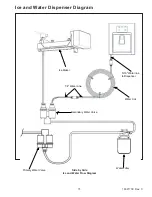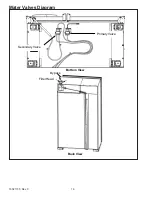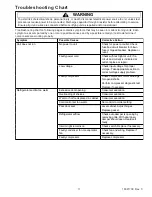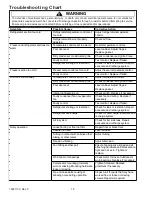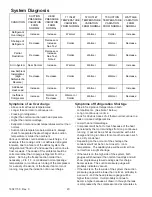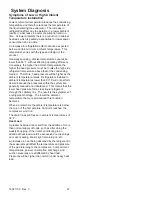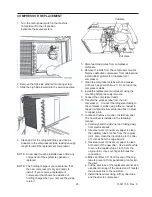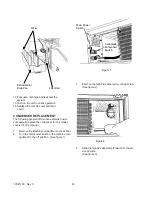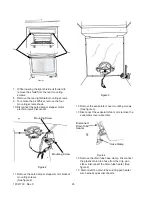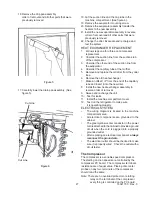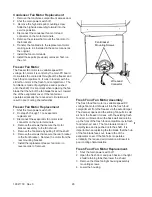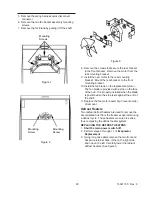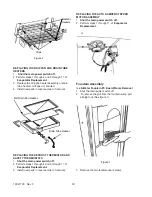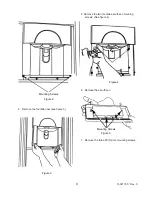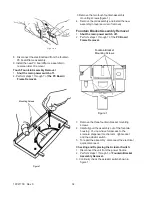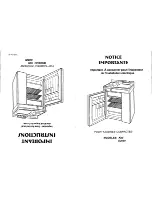
17
16021730 Rev. 0
Troubleshooting Chart
Symptom Possible
Causes
Corrective
Action
No power to unit
Check for power at outlet. Check
fuse box/circuit breaker for blown
fuse or tripped breaker. Replace or
reset.
Faulty power cord
Check with test light at unit; if no
circuit and current is indicated at
outlet, replace or repair.
Low voltage
Check input voltage for proper
voltage. Take appropriate action to
correct voltage supply problem.
Unit does not run
Faulty compressor
Check compressor motor windings
for opens/shorts.
Perform compressor diagnostic test
Replace if necessary.
Excessive door opening
Consumer education
Overloading of shelves
Consumer education
Warm or hot foods placed in cabinet
Consumer education
Cold control set too warm
Set control to colder setting.
Poor door seal
Level cabinet. Adjust hinges.
Replace gasket.
Refrigerator airflow
Check auto damper is opening by
removing grille. With door open,
damper should open. Replace if
faulty.
Interior light remains on
Check switch. Replace if necessary.
Faulty condenser fan or evaporator
fan
Check fan and wiring. Replace if
necessary.
Refrigerator section too warm
Faulty compressor
Replace compressor.
Troubleshooting chart on following pages contains symptoms that may be seen in malfunctioning units. Each
symptom is accompanied by one or more possible causes and by a possible remedy or test to determine if
components are working properly.
To avoid risk of electrical shock, personal injury, or death, disconnect electrical power source to unit, unless test
procedures require power to be connected. Discharge capacitor through a resistor before attempting to service.
Ensure all ground wires are connected before certifying unit as repaired and/or operational.
!
WARNING

